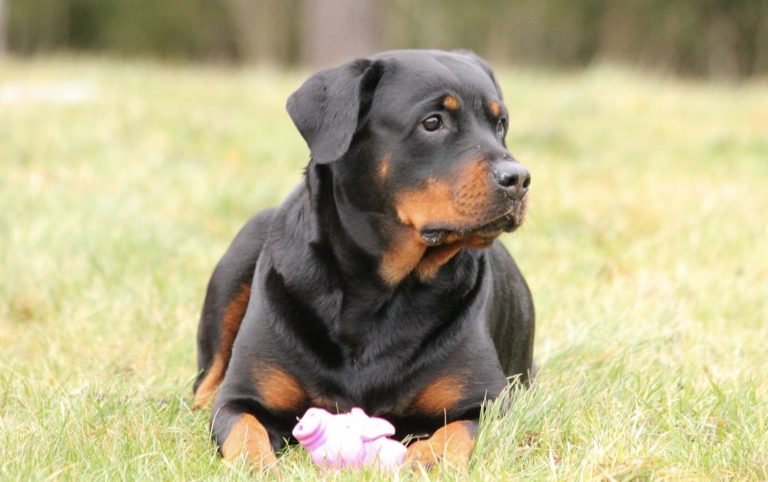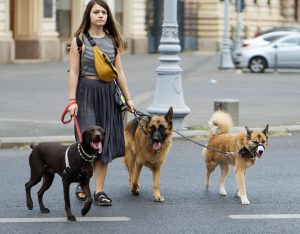Dogs are not born with the ability to understand human language. So, how do they understand when we tell them to sit? Or to lie down? What about come here? Well, dogs learn through positive association, which is the essence of positive reinforcement training.
No matter if you have a young puppy or an adult dog, you can teach him all sorts of important cues. Many years ago, any dog trainer would tell you to teach your dog a command. Well, no more. In the past several years, dog training has evolved.
We now use cues instead of commands. This might sound confusing to you, so let’s try and explain the difference between cue and command.
Ask the dictionary
Let’s start by taking a page out of the dictionary. In that spirit, let’s see what dictionary.com says about both words.
Command – verb, defined as:
- To direct with specific authority or prerogative; order
- To require authoritatively; demand
- To have or exercise authority or control over; be master of; have at one’s bidding or disposal
Cue – noun, defined as:
- Anything said or done, on or off stage, that is followed by a specific line or action
- Anything that excites to action; stimulus
- A hint; intimation; guiding suggestion
As you can see, the two words are quite different. For starters, one of them is a verb, and the other is a noun.
What is a cue and how do we use it?
Cues can be all sorts of things. Let me give you an example. For example, when I put on my jeans, Milo knows I am going out, and in 99% of the cases, he is not coming. So, the moment he sees me putting on jeans, he goes to his dog house and stays there until I come back home.
Which is different when I put on some sweatpants, it is a cue we are going for a walk. Or when I pick up my training bag, he knows I am going to the gym, and he is not coming. So, he goes to his dog’s house. I do not even have to say the word “place”.
Cues can be everything, a whistle, a word, a hand gesture, or even an event like looking at your watch. Some cues we deliberately teach our pets. Those include words like sit, down, come here, and similar. Others, our pets figure it out on their own, like Milo figuring out he doesn’t come with me when I put on jeans for going out.
When used in positive reinforcement training, a cue is a signal we give to our pet right before we want them to perform a known behavior. We have to stress this, KNOWN behavior. Something your pet has learned before. You cannot expect your pet to perform something he/she hasn’t learned by now.
Cues enable us to share information with our dogs. It tells your puppy what will happen next and that prevents your dog from experiencing unwanted stress.
How is cue different than command?
Now let’s talk about the difference between cue and command. Simply put, a dog training command implies a threat. Or in other words, “do it or I will make you do it”. We give a command before the behavior is learned, and it can be enforced if the puppy does not comply.
For example, many years ago, a dog trainer could teach sit by pushing down on the dog’s rump while saying sit, repeating the word and the action until the dog figures it out to sit.
Cue is completely different. There is no threat implied with a cue. It is like a green light that tells the dog now is the time to perform a behavior for the chance of reinforcement. You can use a verbal cue, visual cue, or a hand signal.
Another difference, as we said before, commands are used before the behavior is learned. Cues work for known behaviors. Because commands are used before we teach a behavior, they are difficult to identify any lurking weaknesses. When you take the behavior to the real world, your pet might not perform the command. He is great at home but doesn’t work outside.
Cues, on the other hand, are versatile. They work in any environment, in any setting. Why? Because they are taught gradually with distractions, your pet understands that sit means sit anywhere and anytime.
Positive reinforcement trainers try to avoid the term command. Many consider it outdated and they say it holds a much different meaning than cue. And that is true.
The main difference is commands imply there is no choice but to comply. If not, a force can be used. Cues, on the other hand, enable our pets to make a choice. They encourage learning. We teach cues and allow our pet to succeed. We make sure our pet wins every time and gets reinforcement for the desired behavior.
Making cues part of a game
With cues, you can turn training into a game. They are chock full of possibilities. Dogs love to seek, sniff, explore, and more. You can use that to your advantage with a cue.
How? Well, you determine what you want your dog to do. For example, sniffing. Then, you guide your dog and reward him through each step of the process towards the finished goal.
With cues, your dog becomes an active learner, not a passive learner. Once the desired behavior looks like we want to look, and our dog is performing it seamlessly and consistently, then we add a cue.
And if your dog doesn’t perform the behavior, there is no need for punishment. It is a sign that between the cue and the response, we have work to do. You mark every step of the learning process, and you continue playing.
Do you know how many games you can play with your puppy? They all work with cues!
Make sure the cue is not confusing
One of the reasons you can fail as a dog owner or pet parent is that you use confusing cues. Dog owners often create accidental cues and later end up causing confusion.
This is a common problem. Timing is everything. It is important to understand you need to reinforce the behavior you want of your puppy.
Here is an example of how you might give a wrong and confusing cue, and actually reinforce undesirable behavior. Let’s say your pet whines and asks something out of you. What do you do? Do you comply? Or?
Well, if you comply while your pet is whining, you reinforce its whining. What you need to do is put your dog in a sit position, calm him down, and then give him a treat/toy, or anything else. This way, you reinforce calm behavior.
It is the same with barking.
Why Your Pet Might not React to Cues
There are many reasons dogs do not respond to cues. Here is a quick breakdown:
- We assume that the dog understands the cue signal, but he hasn’t had enough practice
- There are too many distractions in the environment, and your pet still hasn’t learned to train with distractions
- The reward is not rewarding enough for your dog. In the beginning, you have to use higher-value rewards, and then gradually lower the value
Cues can also go wrong. This is true when they do not have pleasant meaning. For example, if you teach things through fear or pain, your dog might find that cue unpleasant. Here is another common example. Leash jerking. If you constantly use leash jerks during your walks, your pet might find walks as a scary experience and associate the collar with frightening events.
Timing is everything
Let’s finish off the difference between cue and command article with the most important thing. Timing is everything in dog training with cues. Insert the cue just as the dog is about to offer the behavior.







